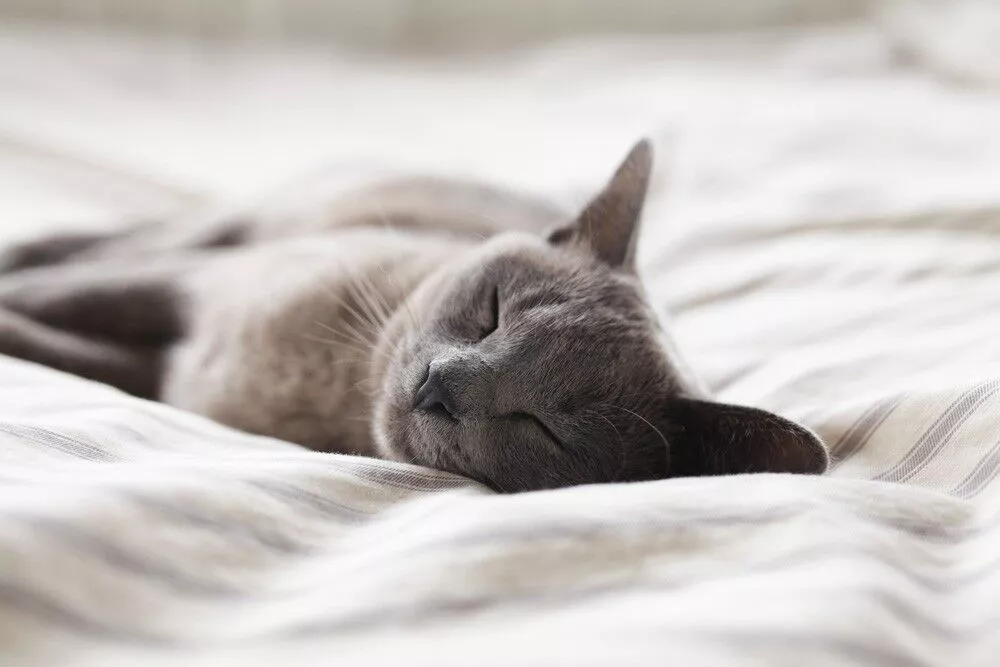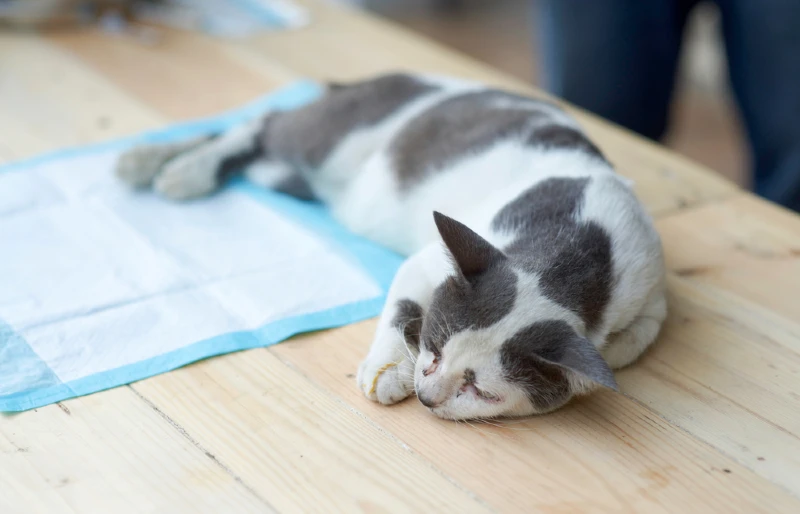Rigor mortis, the stiffening of muscles after death, typically begins in cats within hours and lasts for about 12 to 48 hours.
In addition, factors like temperature and size can affect the timing. It starts in the jaw and neck, spreading to limbs, before muscles gradually relax. Consult a vet for health concerns.
What factors affect rigor mortis duration in cats?
The duration of rigor mortis in cats is influenced by a myriad of intricate factors, each contributing to the intricate timeline of postmortem changes.
Environmental Conditions
Ambient Temperature: The temperature of the environment has a significant impact on the onset and duration of rigor mortis.
In addition, lower temperatures slow down chemical reactions, which can delay the onset and extend the duration of rigor mortis.
Conversely, higher temperatures can accelerate these processes, leading to a faster onset and shorter duration.
Humidity Levels: Humidity can affect the rate of evaporation of bodily fluids, which can influence the overall rate of decomposition.
In addition, higher humidity might slow down the process due to reduced evaporation, potentially prolonging rigor mortis.
Conversely, lower humidity levels could lead to faster evaporation and potentially faster decomposition.
Cat-Specific Factors
Size and Age of the Cat: The size of the cat’s body can influence rigor mortis duration. Moreover, larger animals may take longer to reach full rigor, while smaller ones might do so more quickly.
Additionally, age can also play a role, as older cats might experience rigor mortis differently due to changes in muscle density and overall metabolism.
Individual Metabolic Rate: The metabolic rate of a cat can affect rigor mortis duration. Cats with higher metabolic rates might experience a faster progression of rigor mortis due to more rapid biochemical changes.
Conversely, cats with slower metabolic rates might have a slower onset and longer duration of rigor mortis.
What is the onset and progression of rigor mortis in cats?

Embarking on the postmortem journey, rigor mortis sets in as a gradual and fascinating process in cats.
Time Frame for Rigor Mortis Onset
Initiation in Jaw and Neck Muscles: Rigor mortis typically starts within a few hours after death.
However, it often begins in the jaw and neck muscles because these areas contain smaller, more delicate muscles that are rich in enzymes.
In addition, the reduced blood flow after death allows these enzymes to interact with muscle proteins, leading to the stiffening process.
Spread to Other Parts of the Body
Involvement of Limbs and Trunk Muscles: After the initial onset in the jaw and neck, rigor mortis gradually spreads to other parts of the body.
Additionally, this progression includes the limbs and trunk muscles. The muscles become increasingly stiff and difficult to move during this stage. Moreover, the sequence of progression can vary, but it generally follows a consistent pattern.
How long does rigor mortis last in cats?
The temporal dance of rigor mortis in cats varies, with its duration influenced by a constellation of factors.
Typical Duration Range
12 to 48 Hours: Rigor mortis in cats usually lasts for a span of approximately 12 to 48 hours. This time frame represents the period during which the muscles are in their most rigid state. The process begins shortly after death and gradually resolves as decomposition continues.
Variability in Duration
Influence of Temperature and Metabolic Factors: The duration of rigor mortis is subject to significant variability due to factors such as temperature and individual metabolic rate.
Moreover, lower temperatures can slow down the progression of rigor mortis, potentially extending its duration beyond the typical range.
Conversely, higher temperatures can accelerate biochemical reactions, leading to a faster onset and a shorter duration of rigor mortis.
Similarly, cats with higher metabolic rates might experience a more rapid progression of rigor mortis.
Other Post-Mortem Changes and Considerations :

Beyond rigor mortis, the realm of post-mortem changes in cats unfolds a tapestry of intricate transformations and considerations.
Rigor Mortis as Part of the Decomposition Process
Stages of Decomposition: Rigor mortis is one of the earliest and most noticeable stages of the decomposition process in a deceased body.
In addition, it is caused by the coagulation of proteins in the muscle fibers due to a lack of ATP (adenosine triphosphate) production.
As cellular functions cease, rigor mortis sets in, leading to the stiffening of muscles. It’s important to note that rigor mortis doesn’t mark the end of decomposition but is an early phase that leads to subsequent changes.
Additional Changes Following Rigor Mortis
Flaccid Stage: After the rigor mortis phase, the muscles gradually relax and return to a flaccid state. Moreover, this relaxation occurs as the enzymes responsible for breaking down the protein structures become active again.
Additionally, the duration of this relaxation phase can also vary based on factors like temperature and individual characteristics.
Autolysis and Putrefaction: Following rigor mortis and the flaccid stage, the body enters the stages of autolysis and putrefaction.
Moreover, autolysis involves the breakdown of cells by their own enzymes, leading to the release of various compounds. Putrefaction is the process of bacterial and enzymatic degradation of tissues, resulting in the release of gasses and foul odors.
Additionally, these stages are part of the broader decomposition process that continues after rigor mortis.
FAQ’s :
What is rigor mortis?
Rigor mortis is the stiffening of muscles that occurs after death due to the coagulation of proteins.
How long does rigor mortis last in cats?
Rigor mortis in cats typically lasts from 12 to 48 hours.
What factors affect the duration of rigor mortis in cats?
Environmental conditions like temperature and humidity, as well as cat-specific factors such as size and metabolic rate, influence the duration of rigor mortis.
Where does rigor mortis start in cats?
Rigor mortis often starts in the jaw and neck muscles of cats.
What comes after rigor mortis?
After rigor mortis, muscles gradually relax, followed by stages of autolysis and putrefaction as part of the decomposition process.
Can rigor mortis help determine time of death?
Yes, observing the stage of rigor mortis can provide insights into the approximate time of death, considering environmental conditions and other factors.
Can temperature affect rigor mortis duration?
Yes, lower temperatures can slow down rigor mortis, potentially extending its duration, while higher temperatures can speed up the process.
Is rigor mortis the end stage of decomposition?
No, rigor mortis is an early phase of the decomposition process. It’s followed by relaxation of muscles and subsequent stages of breakdown like autolysis and putrefaction.
Conclusion :
In summary, rigor mortis is a natural physiological process that occurs in cats and other organisms after death. It involves the stiffening of muscles due to the coagulation of proteins and is influenced by factors such as temperature, humidity, size, age, and metabolic rate.
Additionally, the onset of rigor mortis typically begins in the jaw and neck muscles, spreading to other parts of the body over a span of hours. Moreover, the duration of rigor mortis ranges from 12 to 48 hours on average. But this time frame can be influenced by environmental conditions and individual characteristics.
Rigor mortis is just one phase in the broader process of post-mortem changes and decomposition. It serves as an early indicator of the cessation of cellular processes and the beginning of breakdown processes.
After the rigidity phase, muscles gradually relax, and the body proceeds through stages of autolysis and putrefaction.
In addition, understanding rigor mortis and its associated factors is essential for veterinarians, researchers, and individuals handling deceased animals.
By considering the various influences on rigor mortis and its place within the sequence of post-mortem changes, a more comprehensive understanding of the physiological and biochemical processes following death can be gained.
For accurate insights into a cat’s health or well-being, consulting a veterinarian remains crucial.

